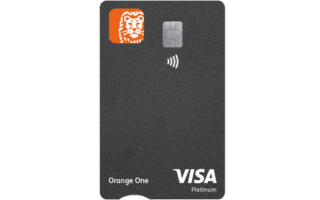How to Create an Effective Budget for the Australian Lifestyle

Understanding the Importance of a Budget in Australia
Creating and maintaining a budget is essential to achieving financial stability. With the diverse economic landscape of Australia, ranging from metropolitan areas such as Sydney and Melbourne to regional towns, the advice tailored to Australian readers is crucially different. An efficient budget not only helps in managing day-to-day expenses but also prepares individuals for unforeseen financial difficulties.
An effective budget serves several vital functions:
- Track your income: A budget helps you gain a clear understanding of your total earnings from various sources, including employment, investments, rental incomes, and any side hustles. This clarity enables you to allocate financial resources efficiently.
- Monitor expenses: By categorising your spending into essential (like housing and groceries) and discretionary (like dining out and entertainment), you can develop insights into where adjustments can be made. Tools like mobile budgeting apps can assist in tracking these expenses effortlessly.
- Set financial goals: Once your income and expenses are clear, it’s possible to establish achievable financial goals. This may include saving for a home deposit, planning for children’s education, or building an investment portfolio for retirement.
To formulate a budget that resonates with the Australian lifestyle, it is crucial to account for specific regional costs:
- Household costs: In urban areas, dwelling costs are significantly higher compared to rural regions. According to the Australian Bureau of Statistics, housing affordability remains a pressing issue in major cities, making it important to allocate a proper percentage of your monthly income towards rent or mortgage repayments.
- Transport: The decision between owning a car or using public transport is another critical factor in budgeting. In cities like Melbourne, where public transport is widely accessible, individuals may find it more economical to rely on trains and trams rather than the costs associated with car ownership, including insurance, maintenance, and fuel.
- Leisure activities: Australia offers a wealth of leisure options, from outdoor adventures to cultural experiences. However, the costs can vary significantly based on location. Budgeting for these activities, whether it’s attending a sporting event at the MCG or visiting local galleries in a smaller town, ensures a balanced lifestyle while staying financially responsible.
Overall, a budget should not merely serve as a financial restraint; it should act as a strategic tool that empowers you to meet daily obligations while positioning you for future opportunities. With the right approach, you can navigate financial challenges and work toward long-term prosperity with greater confidence. This article aims to provide practical steps for crafting a budget that aligns with your unique circumstances in Australia.
SEE ALSO: Click here to read another article
Key Components of an Effective Budget
Creating a budget requires a thorough understanding of your financial habits and environment. To develop a robust budget that aligns with the Australian lifestyle, various critical components must be considered. The following steps will guide you in designing an effective budget tailored to your specific circumstances.
1. Organise Your Financial Data
The first step in creating a budget is to gather all relevant financial information. This includes documents such as pay slips, bank statements, bills, and any additional income sources. Having a comprehensive view of your finances will allow you to make informed decisions. Consider the following items for your financial overview:
- Income Sources: Identify all streams of income, including salary, bonuses, freelance work, and passive income. Accurately calculate your total monthly income.
- Fixed Expenses: List regular monthly expenses, such as rent or mortgage payments, utilities, insurance, and loan repayments. This gives you a baseline for mandatory financial commitments.
- Variable Expenses: Track discretionary spending, which may include groceries, dining out, entertainment, and personal care items. These categories provide insight into areas where changes can be made.
2. Categorise Your Spending
Once you have established your income and expenses, categorising your spending is crucial. This process enables you to differentiate between essential and non-essential items, giving you a clearer picture of where your money flows. In Australia, consider the following categories:
- Essentials: This category should encompass necessities such as housing, food, transportation, and healthcare. For Australians, healthcare costs can vary significantly, particularly with the public system (Medicare) and private health insurance options.
- Discretionary: Allocate funds for entertainment, hobbies, travel, and dining experiences. Understanding these discretionary expenses allows for financial flexibility without compromising essential needs.
3. Set Realistic Financial Goals
Having established a clear financial overview and spending categories, the next vital step is to set realistic financial goals. Goals should be specific, measurable, attainable, relevant, and time-bound (SMART). Examples of attainable financial goals in the Australian context include:
- Emergency Fund: Aim to save at least three to six months’ worth of living expenses to handle unexpected costs, such as car repairs or job loss.
- Home Ownership: If purchasing a home is a goal, determine the necessary savings for a deposit, factoring in various regional Melbourne or Sydney property prices, which can differ vastly.
- Retirement Savings: Invest in superannuation early to ensure a comfortable retirement. Setting a target percentage of your income to contribute consistently will yield significant benefits over time.
Utilising these steps will empower Australians to create a comprehensive budget that adapts to fluctuating costs and personal circumstances. By being strategic in managing your finances, you can achieve long-term financial well-being and prosperity.
SEE ALSO: Click here to read another article
Implementing and Monitoring Your Budget
Having created a comprehensive budget that captures your financial landscape and goals, the next essential step is to implement and monitor it effectively. This ensures that your budgeting efforts translate into tangible financial results. Below are crucial strategies that will assist you in applying your budget and keeping track of financial performance.
1. Choose a Budgeting Method
Different budgeting methods can suit various lifestyles and preferences. Identifying the most effective system for your situation can enhance both compliance and success. In Australia, popular budgeting methods include:
- The 50/30/20 Rule: This straightforward approach divides your after-tax income into three categories: 50% for needs, 30% for wants, and 20% for savings and debt repayment. This rule provides an effortless way to balance essential expenses with savings, making it suitable for many Australians.
- Zero-Based Budgeting: Every dollar must be allocated to a specific expense, savings, or debt repayment from your total income, resulting in a ‘zero’ balance at the end of the month. This method encourages intentional spending and is often beneficial for those aiming to cut back on discretionary expenses.
- Envelope System: This tactile approach involves using cash for different spending categories, where each envelope represents a specific budgetary allocation. While this method may seem dated, many find it beneficial for gaining awareness about their spending behaviors.
2. Utilise Budgeting Tools
In today’s digital age, numerous tools and applications are available to simplify the budgeting process. Popular budgeting tools among Australians include:
- Apps like Pocketbook and YNAB: These platforms facilitate tracking expenses, categorising spending, and sharing insights, enhancing the user experience. They automatically sync with your bank account, providing real-time updates that assist in maintaining your budget.
- Spreadsheets: For those who prefer a hands-on approach, constructing a budget spreadsheet in applications like Microsoft Excel or Google Sheets can help tailor financial management to your unique needs. This method is well-suited for individuals who enjoy custom calculations and analysis.
3. Regularly Review and Adjust Your Budget
Creating a budget is not a one-time effort; it requires ongoing evaluation and adjustments based on changes in income, expenses, and financial goals. To maintain an effective budget, engage in periodic reviews, perhaps monthly or quarterly, and perform the following actions:
- Track Progress: Regularly comparing your actual spending against your budgeted amounts will help you identify patterns, enabling you to make informed decisions about adjustments. Tracking software or apps can facilitate this process.
- Identify Trends: Pay attention to recurring expenses or unexpected expenditures. This information will arm you with knowledge when reallocating your budget in response to changing conditions, such as rising utility costs or shifts in income.
4. Involve Family Members
If you share financial obligations with family members or roommates, consider involving them in the budgeting process. Collaborative engagement fosters transparency and accountability, ensuring all parties understand financial goals and priorities. In Australia, where sharing costs among housemates is common, adopting a communal approach can enhance financial success and promote responsible spending habits.
By effectively implementing and monitoring your budget using the methods outlined above, Australians can navigate their financial responsibilities with confidence. The self-discipline gained through diligent budgeting practices can lead to improved financial literacy and empower individuals to thrive in their chosen lifestyle.
SEE ALSO: Click here to read another article
Conclusion
Establishing an effective budget designed for the Australian lifestyle is an essential step toward achieving financial stability and reaching individual financial aspirations. A well-structured budget serves not only as a financial plan but also as a strategic tool that reflects personal values and priorities. By taking the time to select a budgeting method that suits their needs—be it the traditional envelope system or a more modern app-based approach—individuals can gain a clearer understanding of their monetary resources. Utilising technology, particularly budgeting apps such as Pocketbook or YNAB (You Need A Budget), can significantly streamline the budgeting process, allowing users to easily track expenses in real-time, automate bill payments, and set savings goals.
Regularly reviewing financial progress is a critical component of maintaining an effective budget. This might involve conducting monthly check-ins to assess if one is consistently adhering to their budget or if adjustments are necessary due to changes such as a new job, increased living expenses, or unexpected financial obligations. Such reflective practices not only foster financial discipline but also enhance awareness of spending habits, empowering individuals to make more informed financial decisions.
It is equally important to acknowledge that budgeting is an adaptable process. As life evolves, whether through changes in personal circumstances, such as marriage, children, or returning to study, one’s budget should evolve correspondingly. Involving family members in this journey is vital; it cultivates accountability and collective responsibility. For instance, discussing family outings, school expenses, or home renovations together ensures everyone is on the same page and invested in achieving shared financial objectives.
In essence, a robust budget acts as a roadmap for Australians, facilitating navigation through various financial challenges while maximising savings and optimising spending. By implementing sound budgeting strategies and committing to a proactive approach, individuals can cultivate a lifestyle that is not only financially secure but also enriching and fulfilling. Ultimately, adhering to these budgeting principles not only creates a clearer path to achieving financial goals but also enhances one’s overall quality of life by reducing financial stress and providing more opportunities for personal enjoyment.

Beatriz Johnson is a seasoned financial analyst and writer with a passion for simplifying the complexities of economics and finance. With over a decade of experience in the industry, she specializes in topics like personal finance, investment strategies, and global economic trends. Through her work, Beatriz empowers readers to make informed financial decisions and stay ahead in the ever-changing economic landscape.






